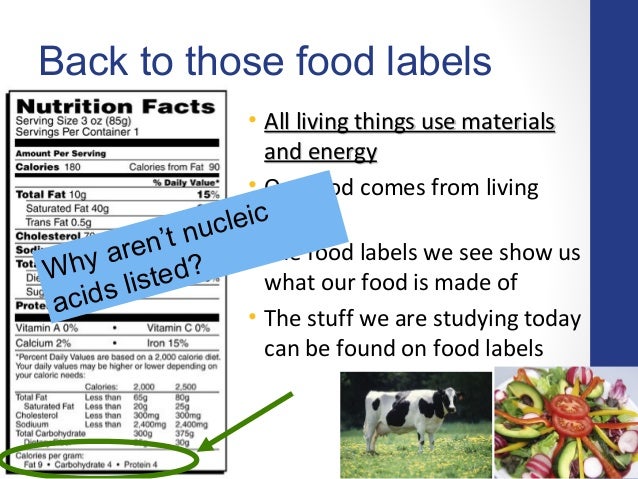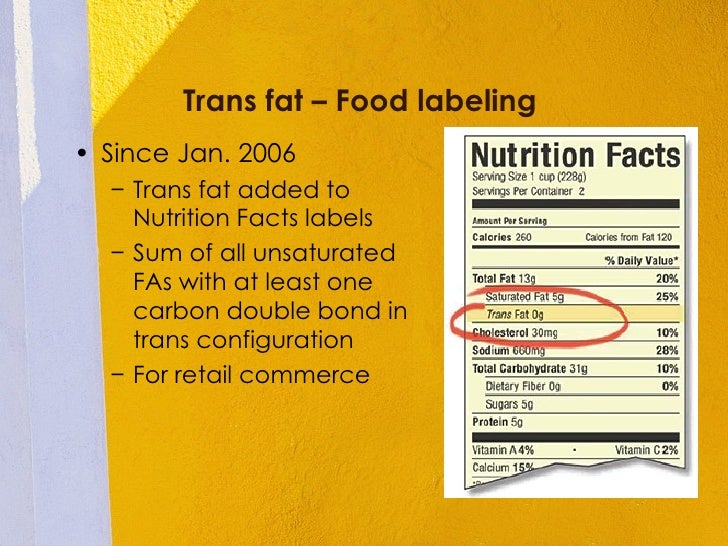43 lipids on food labels
Food labels - NHS Some front-of-pack nutrition labels use red, amber and green colour coding. Colour-coded nutritional information tells you at a glance if the food has high, medium or low amounts of fat, saturated fat, sugars and salt: red means high amber means medium green means low In short, the more green on the label, the healthier the choice. Nutrition Facts: What are Lipids? - Universal Class
Reading Food Labels | ADA - American Diabetes Association Put food labels to work. The Nutrition Facts labels on foods are really the key to making the best choices. We'll cover the basics so that these labels make shopping easier for you. You've heard it all. From carb-free to low-carb, to whole and empty carbs, it's hard to know what it all means. Blood sugar highs and lows aren't always ...

Lipids on food labels
How to Find Lipids on Food Labels - Healthy Living How to Find Lipids on Food Labels The nutrition facts panel describes the amount of total fat, or lipids, and the types of fats you'll get from one serving. You'll also find claims such as... Understanding Food Labels | The Nutrition Source | Harvard ... Understanding Food Labels. The information on food labels is intended to help consumers become savvy about their food choices. The front, back, and sides of a package are filled with information to inform us what the food contains and to provide guidance in making healthier selections of processed foods. However, all the numbers, percentages ... Food Labels: Fat & Cholesterol | Home & Garden Information ... Food labels contain clues to a food's fat and cholesterol content, including the amount per serving. Compare similar foods and select the one with the smallest amounts of fat and cholesterol. Two important parts of a food label are the "Nutrition Facts" panel, which contains nutrition information, and the ingredients list.
Lipids on food labels. Lipids Fact Sheet Fats are found in many foods and are a dense source of calories. ... Lipids -- the fat family including, triglycerides (fats and oils), ...2 pages Should I check the cholesterol on nutrition labels ... Major dietary cholesterol contributors — meat, fish, and chicken — often have no label. Having less than 4-6 oz of those per day and less than 2-4 eggs per week will generally keep your cholesterol reasonable. And that's a smart idea anyhow, to leave room for more artery-friendly fruits, veg, whole grains, beans, nuts, seeds, etc." How to Understand and Use the Nutrition Facts Label | FDA You can use the label to support your personal dietary needs - look for foods that contain more of the nutrients you want to get more of and less of the nutrients you may want to limit. Nutrients... Food Labels | CDC If you eat the whole thing, you are eating 8 times the amount of calories, carbs, fat, etc., shown on the label. Total Carbohydrate shows you types of carbs in the food, including sugar and fiber. Choose foods with more fiber, vitamins, and minerals. Choose foods with lower calories, saturated fat, sodium, and added sugars. Avoid trans fat.
Lipids and the Food Industry - Human Nutrition Labeling laws allow foods containing trans fat to be labeled "trans-fat free" if there are fewer than 0.5 grams per serving. This makes it possible to eat too much trans fat when you think you're not eating any at all because it is labeled trans-fat free. Always review the label for trans fat per serving. › cms › lib8Carbohydrates, lipids, proteins, and nucleic acids monomers ... solution will turn pale yellow if no lipids are present. It will make two layers if lipids are present. The top layer containing the lipid will be pale pink to orange. Part II. Testing Plant Tissue 1. Label 4 tubes (C for carbohydrate, P for protein, L for lipid and N for nucleic acid). 2. Fill tubes C, P and L with 12 drops of plant solution. Reading the food labels with the lipidomics' help ... The basic principle, supported by lipidomics, provides for a balance in the intake of the 3 types of fat: saturated, monounsaturated, polyunsaturated. So even if you are not a specialist, you can try every day to achieve this balance by reading the fats and choosing the foods to put on the plate. 7 Types of Foods That Contain Lipids (and Which to Limit ... Seeds and Nuts. Many seeds and nuts are good sources of lipids and protein. Almonds, pecans, pistachios, macadamia nuts, walnuts, peanuts, flax seeds, chia seeds and pumpkin seeds are all high in unsaturated fats with ample amounts of protein. Walnuts are also a good source of omega-3s.
Lipid Types and Structures - Nutrition: Science and ... Lipids are a family of organic compounds that are mostly insoluble in water, meaning they do not mix well with water. There are three main types of lipids: triglycerides, phospholipids, and sterols. On this page, we'll learn about the structures of these three types of lipids, as well as their functions in the body and where you can find them in foods. Understanding Food Labels and Health Claims - Nutrition ... Always check the food label to evaluate total calories, fat, protein, carbohydrates, vitamin, and sodium content. The percent DV (daily value) is the nutrient's percentage in the food about its recommended intake. It is a guide to determine if a food is a good or poor source of nutrients. guides.hostos.cuny.edu › che120 › chapter7Chapter 7 - Lipids - CHE 120 - Introduction to Organic ... Apr 18, 2022 · Opening Essay. On July 11, 2003, the Food and Drug Administration amended its food labeling regulations to require that manufacturers list the amount of trans fatty acids on Nutrition Facts labels of foods and dietary supplements, effective January 1, 2006. Food Labels: Carbohydrates | Home & Garden Information Center The 2015 Dietary Guidelines for Americans makes the following recommendations about daily consumption of unrefined carbohydrate foods, based on a 2,000-calorie diet: Choose fiber-rich fruits, vegetables, and whole grains often. 6 ounces of grain products, with at least half of this amount being whole grain products 2 ½ cups vegetables
healthfully.com › list-foods-high-lipids-5941785List of Foods That Are High in Lipids | Healthfully Jul 27, 2017 · (Reference 3, Spreads) Margarine top the list. In order to avoid eating trans fats, you must read labels. Commercially produced and packaged foods often use trans fats since they are cheaper and do not readily spoil. Cake mixes, fast foods, canned soups, frozen casseroles and most baked goods from delis contain trans fats.
› science-fair › articleThe Lipase-Bile Relationship in the Digestion of Fats & Oils ... The digestive system is made up of the digestive tract which is a series of hollow organs joined in a long, twisting tube from the mouth to the anus along with other organs that help the body break down and absorb food. The body uses a two-step process to break down lipids (fat and oils).
Interactive Nutrition Facts Label - Food and Drug ... Nutrition Facts 4 servings per container Serving size 1 1/2 cup (208g) Amount Per Serving 240 Calories % Daily Value* 5% Total Fat 4g 8% Saturated Fat 1.5g Trans Fat 0g 2% Cholesterol 5mg 19%...
open.maricopa.edu › nutritionessentials › chapterLipids – Nutrition Essentials - Maricopa Food Sources of Lipids. Dietary lipids are primarily oils (liquid) and fats (solid). Commonly consumed oils are canola, corn, olive, peanut, safflower, soy, and sunflower oil. Foods rich in oils include salad dressing, olives, avocados, peanut butter, nuts, seeds, and some fish. Fats are found in animal meat, dairy products, and cocoa butter.
IGCSE Biology: 2.29 Understand the role of digestive enzymes, to include the digestion of starch ...
10 Foods High in Lipids That Are Actually Good For You ... Lipids, according to biology, are a category molecules whose main feature is insolubility, or inability to mix with water. This category includes fatty acids, triglycerides, and fats. But for most people, lipid is an acceptable synonym for fat, and if you came to this article, you are probably looking for foods high in fat. The […]
Food labels and their effects on consumers Other food labels and Guideline Daily Amount follow. The available evidence did not allow studying the effects of single labelling schemes on calorie intake/choice. Findings of this study suggest that nutrition labelling may be an effective approach to empowering consumers in choosing healthier products. Interpretive labels, as traffic light ...
How to Read a Food Label - WebMD Most of it is in packaged foods and restaurant items. Limit salt to 2,300 milligrams (about 1 teaspoon) daily. If you have high blood pressure, kidney disease, or diabetes, or are African-American...




Post a Comment for "43 lipids on food labels"